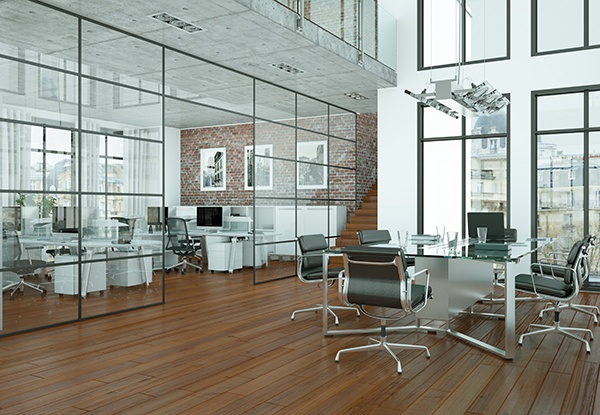
If your company is looking at new office space, you can ensure the success of your move by spending time up front doing a bit of space planning. Choosing an office space can be complicated, and knowing exactly what you need before you start trying to fit spaces to those needs can save you from making expensive mistakes.
1. Start with Headcount Planning
Ultimately, your space planning will only be as good as your people planning. Spend some time carefully reviewing how many people you have and how many people you will need to have in your new office for the entire duration of your lease. A space that is 20 percent larger than your current space might seem much too small in five years if your company doubles in size, after all. Your headcount plan will let you know how many workspaces your office needs to hold.
2. Determine Space Needs Per Employee
Once you've figured out how many people you need, the next step is to figure out how much space each of them need. More and more companies are flattening the space they assign, making the CEO's office much closer in size to an entry level clerical employee's workspace than it might have been in the past. Bear in mind, also, that you might use hotelling or hot desking arrangements to achieve even higher density as part of your space planning strategy.
3. Add for Meetings, Visitors and Culture
Next, figure out how much space you need for flexible workspaces for vendors or visiting employees from other offices. At the same time, include ample space for team get togethers and office meetings, both small and large scale. Finally, especially if you are looking to attract a Millennial workforce, talk with your space planning team about ways to build spaces that enhance company culture. Whether you include play areas, workout rooms or comfortable collaboration spaces, all of these areas can be a positive for your company's employee retnention and overall productivity, but they all also require space.
4. Don't Forget the Mundane
After you've built space for your workers, your visitors and your culture, step back and think about all of the mundane things that make your office work. You still need a place to store paper, keep files and hold copy machines. Hallways, entryways and the like all also consume space and should be considered as a part of your space planning scheme. How many filing cabinets do you need, after all? The odds are that the answer to this question isn't zero.
5. Adjust for On-the-Ground Realities
Finally, you're ready to take your theoretical plan and apply it to an actual, physical space. Work carefully with a space planning expert like an architect or, in some cases, engineer. The realities of entry and exit doors, column spacing and the configuration of the demising walls of your space may change what you had originally planned. After all, you can't put two six-foot wide cubes next to each other in an 11 foot wide space. Your space planning team will help to translate the intentions and goals that you established in the beginning of the process into the realities of your actual location. Best of luck!
Other Commercial Office articles:
Why We Still Need Office Space
5 Tips for Your Next Office Lease
Finding the Right Office Lease Term
Subscribe to our blog for more CRE tips!!








